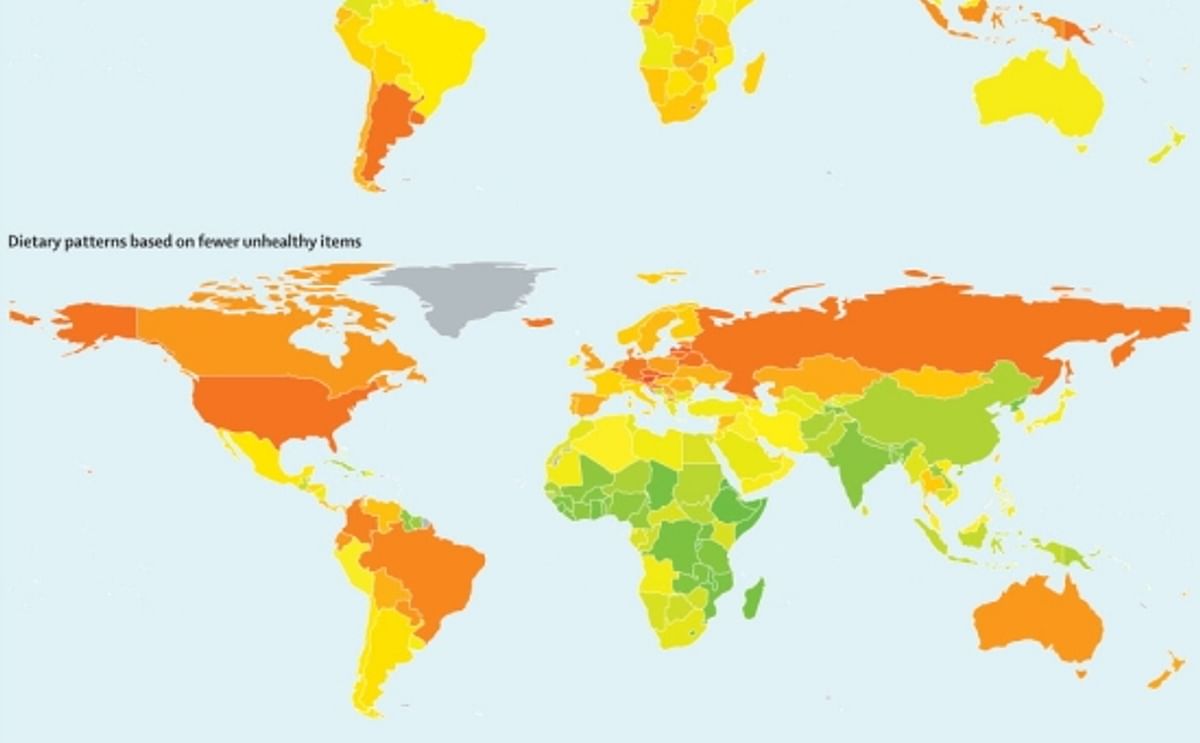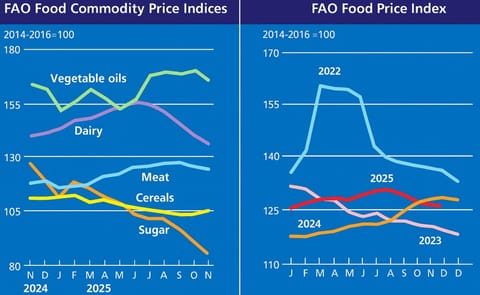A study published in The Lancet Global Health shows that in an analysis of worldwide dietary patterns, overall diet quality worsened across the globe even as consumption of healthier foods increased in many countries. The study compared trends in intakes of healthy versus unhealthy foods in 1990 and 2010 and found major differences by country. Overall, increases in unhealthy foods outpaced beneficial dietary changes, especially in middle-income nations.
The researchers reviewed 325 dietary surveys, representing almost 90% of the world’s adult population, focusing on 17 common foods, drinks, and nutrients. Included were healthier options such as whole grains, fish, fruits and vegetables, and polyunsaturated fat, and unhealthy options such as sodium, cholesterol, processed meat, and sugar-sweetened beverages.
The researchers found that internationally, older adults tended to have better quality diets than younger adults, and women tended to eat healthier than men. They found important relationships between country income and diet quality. For example, they saw an increase in consumption of healthy foods and nutrients in high and middle-income countries, but little increase in low-income countries. The authors suggest that the positive changes may be due to better storage, transport, and availability of out-of-season foods worldwide; and, in higher income countries, improvements in agricultural practices and increased recognition of the importance of healthier diets to minimize diet-related, non-communicable diseases such as diabetes and cardiovascular disease.
The authors saw no increase in consumption of healthier food items in the world’s poorest regions. “The lack of improvement in areas like Sub Saharan Africa and the Andean States of Latin America underlines the urgent need to address diet quality in the poorest nations, where rises in obesity, diabetes, and cardiovascular diseases are joining undernutrition and nutrient deficiencies as health problems,” said first author Fumiaki Imamura, a senior investigator scientist at the Medical Research Council Epidemiology Unit. “If we don’t step up efforts to improve the current food supply, we could see the same turn toward nutrient-poor, processed foods as we’ve seen in China, India, and other middle income countries where we saw the largest increases in consumption of unhealthy foods.”
Although the analysis encompasses global dietary data from individual surveys, the authors acknowledge some study limitations, including a reliance on self-reported dietary questionnaires and less data for some regions, dietary factors, and years. Future studies to investigate dietary differences among socioeconomic groups within each country would be beneficial.
Are we eating healthier now than 20 years ago?

Like to receive news like this by email? Join and Subscribe!
Get the latest potato industry news straight to your WhatsApp. Join the PotatoPro WhatsApp Community!
Sponsored Content
Sponsored Content
Sponsored Content
Sponsored Content







